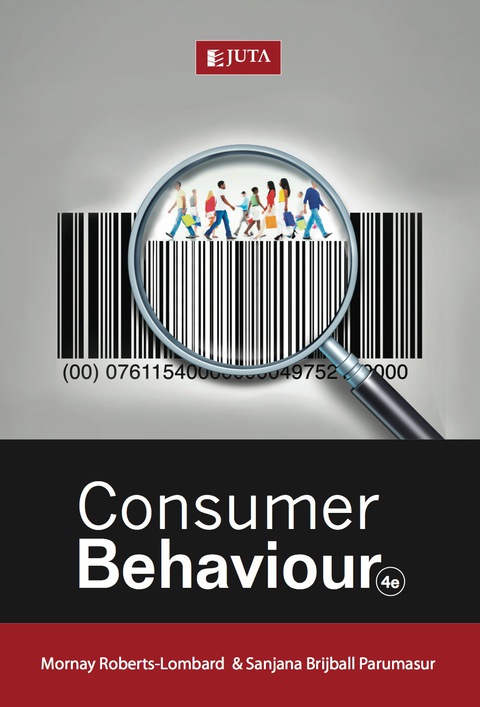Description
Efnisyfirlit
- Title page
- Imprint page
- Contents
- Author team
- Preface
- Chapter 1: Introduction to customer behaviour
- 1.1 Introduction
- 1.2 Defining customer behaviour
- 1.3 The importance of customer behaviour
- 1.4 The applications of knowledge of customer behaviour
- 1.5 The role of customer behaviour in marketing strategy
- 1.6 The components of market analysis
- 1.7 Market segmentation
- 1.8 Marketing strategy
- 1.9 Customer decisions
- 1.10 Outcomes of customer behaviour
- 1.11 The nature of customer behaviour
- 1.12 Summary
- Chapter 2: Creating market value for consumers
- 2.1 Introduction
- 2.2 The definition of value
- 2.3 The market value of a product or service
- 2.4 The value bundling of products and services
- 2.5 The organisation’s perspective on measuring value
- 2.6 Marketing implications of the concept of value
- 2.7 Summary
- Chapter 3: Market characteristics
- 3.1 Introduction
- 3.2 Market characteristics and their influence on consumer behaviour
- 3.3 Developing trends that influence consumer behaviour
- 3.4 Marketing implications
- 3.5 Summary
- Chapter 4: Culture and subculture
- 4.1 Introduction
- 4.2 The nature of culture
- 4.3 The dynamic nature of culture
- 4.4 Subculture
- 4.5 Cultural values and society
- 4.6 South African core values
- 4.7 The measurement of culture
- 4.8 Summary
- Chapter 5: Reference groups and social class
- 5.1 Introduction
- 5.2 Reference groups
- 5.3 Social class
- 5.4 Summary
- Chapter 6: Personal characteristics
- 6.1 Introduction
- 6.2 Religion
- 6.3 Race
- 6.4 Gender
- 6.5 Age
- 6.6 Summary
- Chapter 7: Customer perception and learning
- 7.1 Introduction
- 7.2 The customer as perceiver
- 7.3 Customer learning
- 7.4 Summary
- Chapter 8: Customer motivation
- 8.1 Introduction
- 8.2 The nature of motivation
- 8.3 The classifi cation of motives (needs)
- 8.4 Psychographics
- 8.5 Motivational research
- 8.6 Summary
- Chapter 9: Customer attitudes
- 9.1 Introduction
- 9.2 The nature of customer attitudes
- 9.3 The ABC model of attitude
- 9.4 The functions of attitudes
- 9.5 Attitude formation
- 9.6 Attitude change
- 9.7 Summary
- Chapter 10: Personality and self-concept
- 10.1 Introduction
- 10.2 The nature of personality
- 10.3 The characteristics of personality
- 10.4 Personality theories
- 10.5 The influence of personality on lifestyle
- 10.6 The value of personality to marketers
- 10.7 Self and self-concept
- 10.8 Summary
- Chapter 11: Market segmentation
- 11.1 Introduction
- 11.2 The STP process
- 11.3 Market segmentation
- 11.4 Developing segment profiles
- 11.5 Targeting
- 11.6 Positioning
- 11.7 Summary
- Chapter 12: The consumer decision making process
- 12.1 Introduction
- 12.2 The consumer decision-making process
- 12.3 Buying situations
- 12.4 The stages in the decision-makingprocess
- 12.5 Marketing implications
- 12.6 Summary
- Chapter 13: Household decision making
- 13.1 Introduction
- 13.2 The household as primary reference group
- 3.3 The functions of the household
- 13.4 Suitable household lifestyles
- 13.5 Household decision making
- 13.6 The household life cycle
- 13.7 Household expenditure patterns
- 13.8 Summary
- Chapter 14: Organisational buying behaviour
- 14.1 Introduction
- 14.2 Who are organisational customers?
- 14.3 The importance of organisational buying behaviour
- 14.4 The buying process
- 14.5 Buying situations
- 14.6 Integrating the buying process with buying situations
- 14.7 The buying centre
- 14.8 Forces that shape organisational buying
- 14.9 Relationships in business-to-business markets
- 14.10 The interaction approach
- 14.11 Implications of recent developments in organisational buying
- 14.12 Putting theory and practice together
- 14.13 Summary
- Chapter 15: Consumer loyalty
- 15.1 Introduction
- 15.2 Brand loyalty
- 15.3 Store loyalty
- 15.4 Marketing implications
- 15.5 Summary
- Chapter 16: Building relationships with customers
- 16.1 Introduction
- 16.2 Relationship marketing
- 16.3 Customer relationship management (CRM)
- 16.4 A movement towards customer engagement
- 16.5 From customer relationship management to customer engagement
- 16.6 Relationship loyalty
- 16.7 The individual customer approach
- 16.8 Internal marketing as a strategy to enhance external customer service
- 16.9 Summary
- Chapter 17: The online world and customer behaviour
- 17.1 Introduction
- 17.2 The three main functions of the Web
- 17.3 The internet versus the Web
- 17.4 Online technologies support customer-centrism
- 17.5 Online customer behaviour
- 17.6 Summary
- Reference
- Index







Reviews
There are no reviews yet.